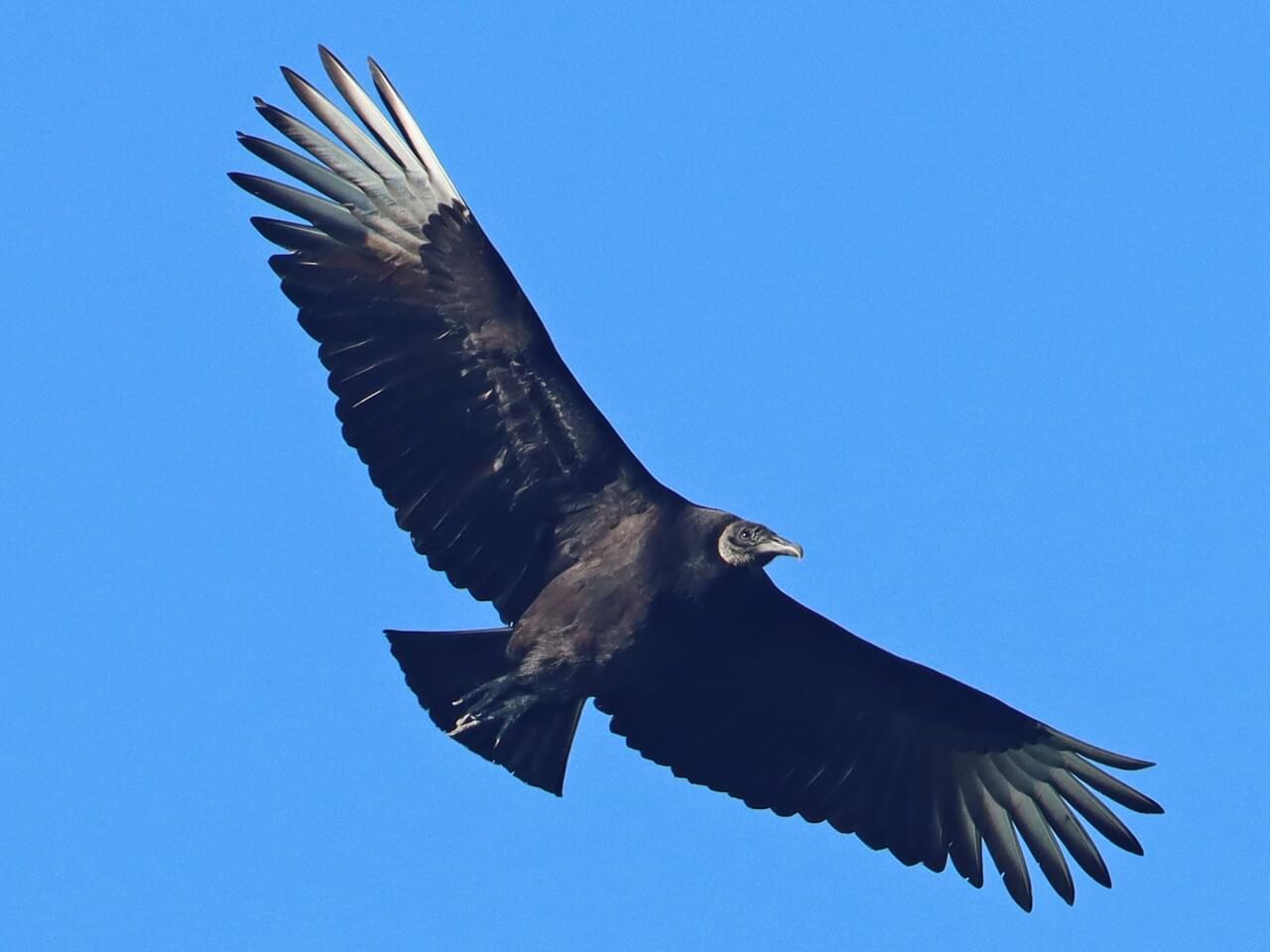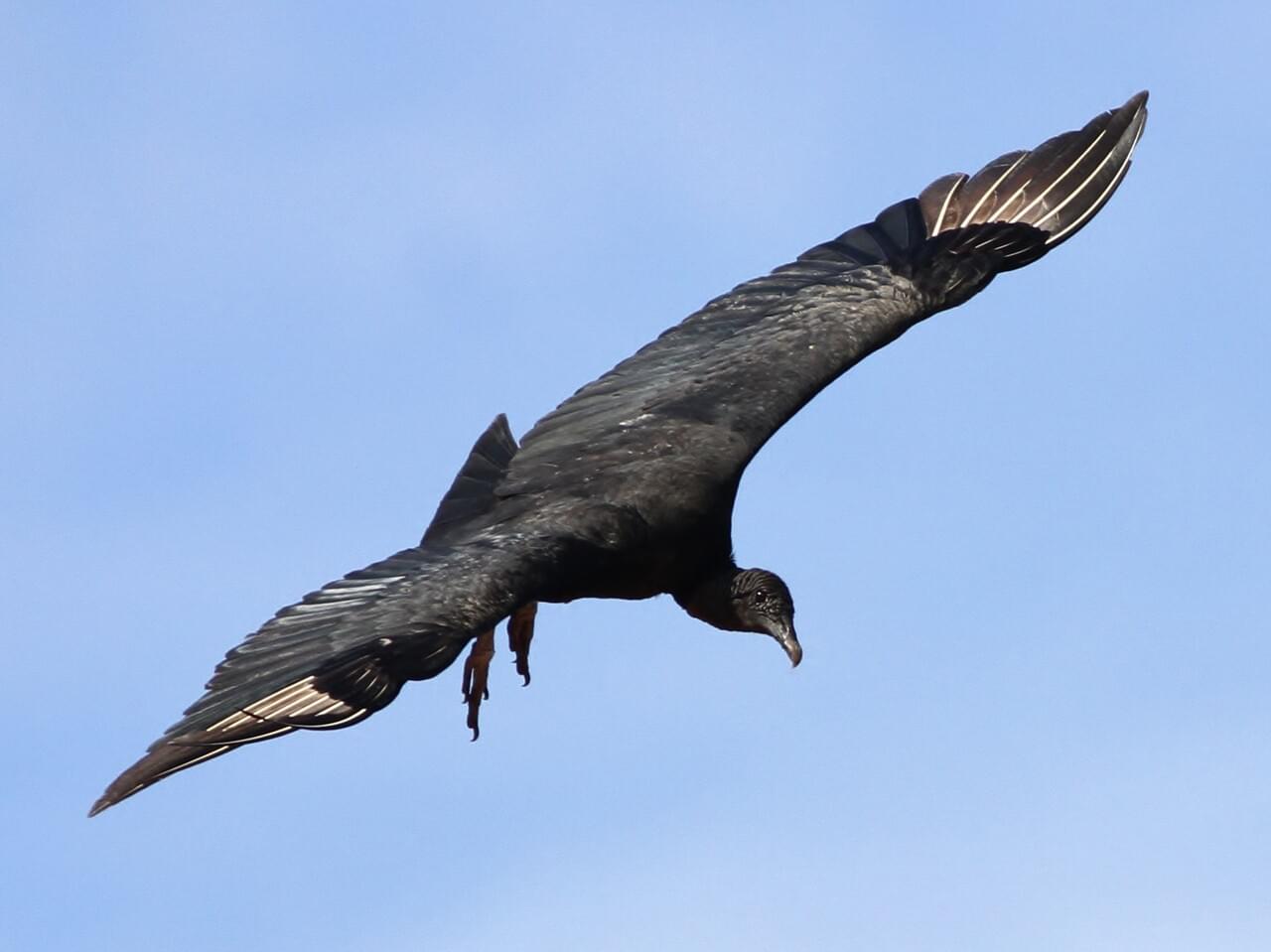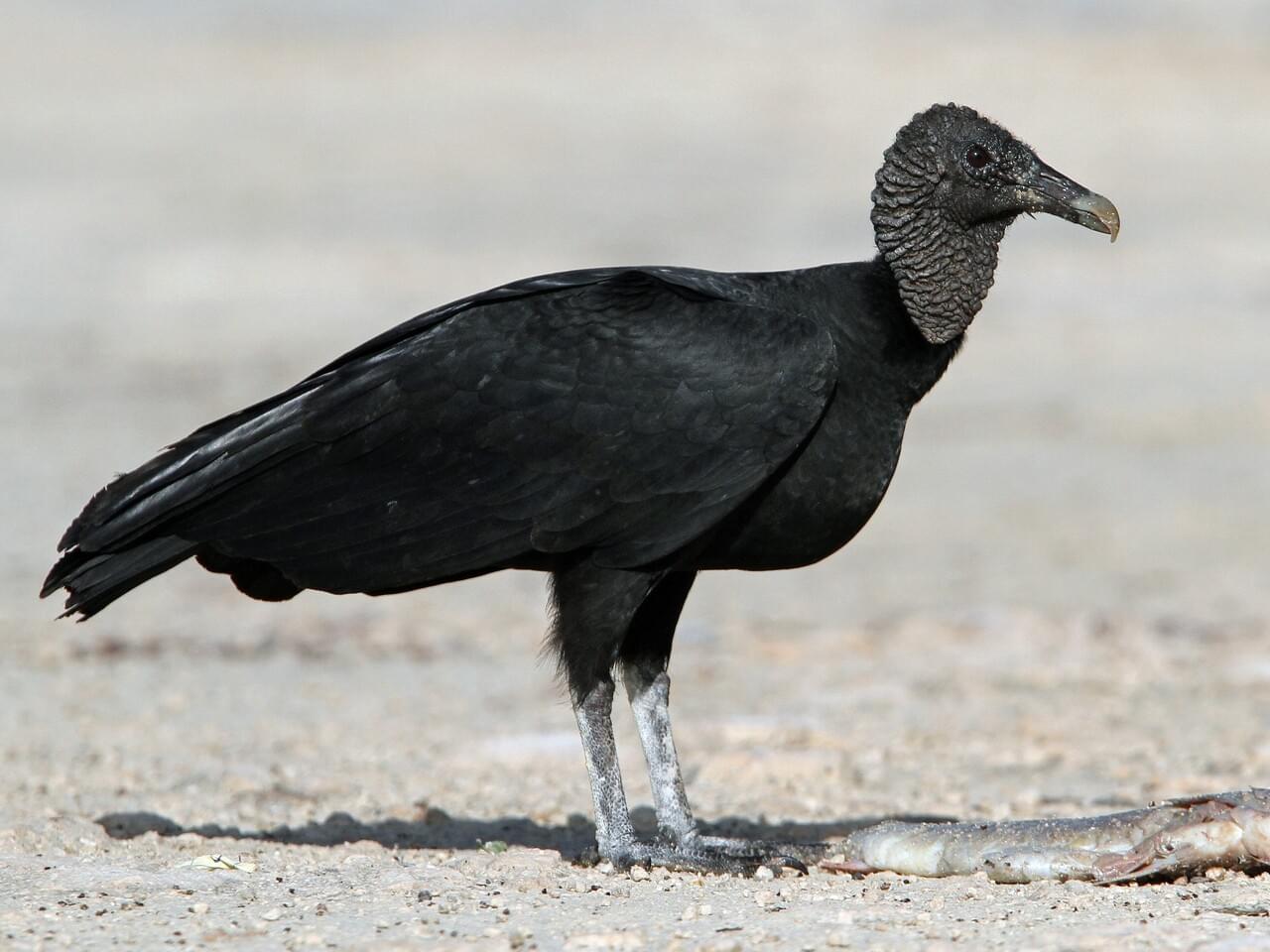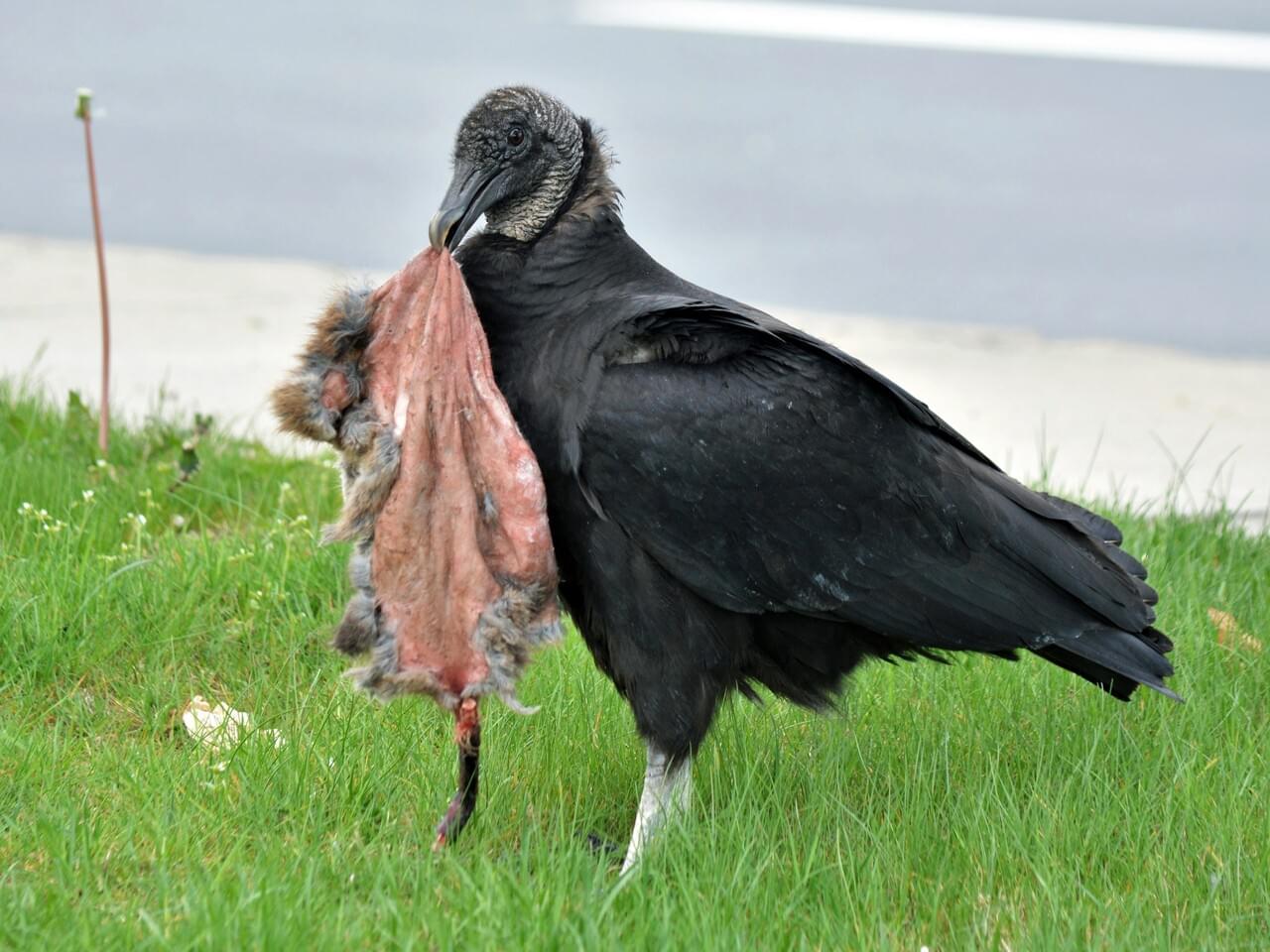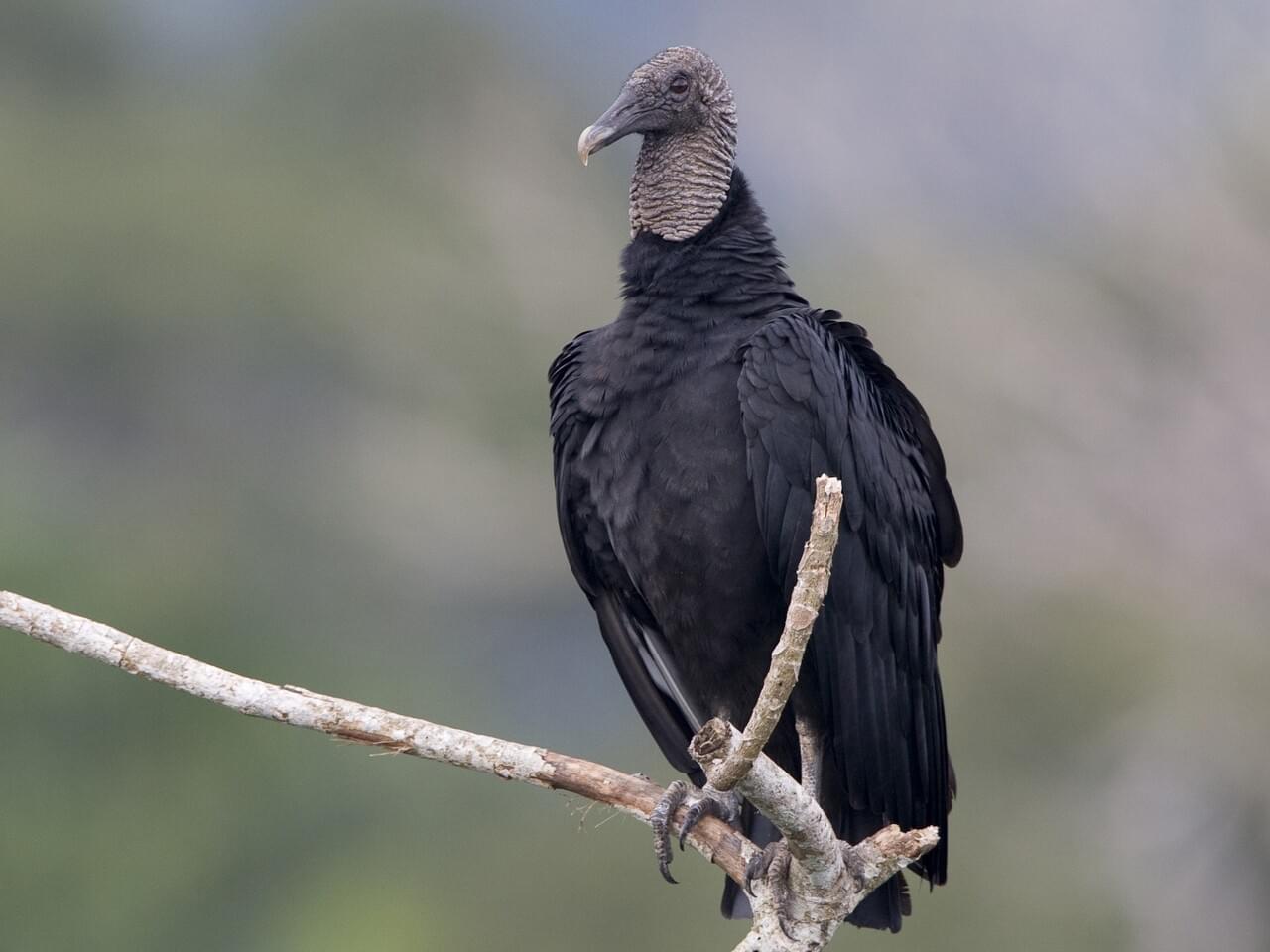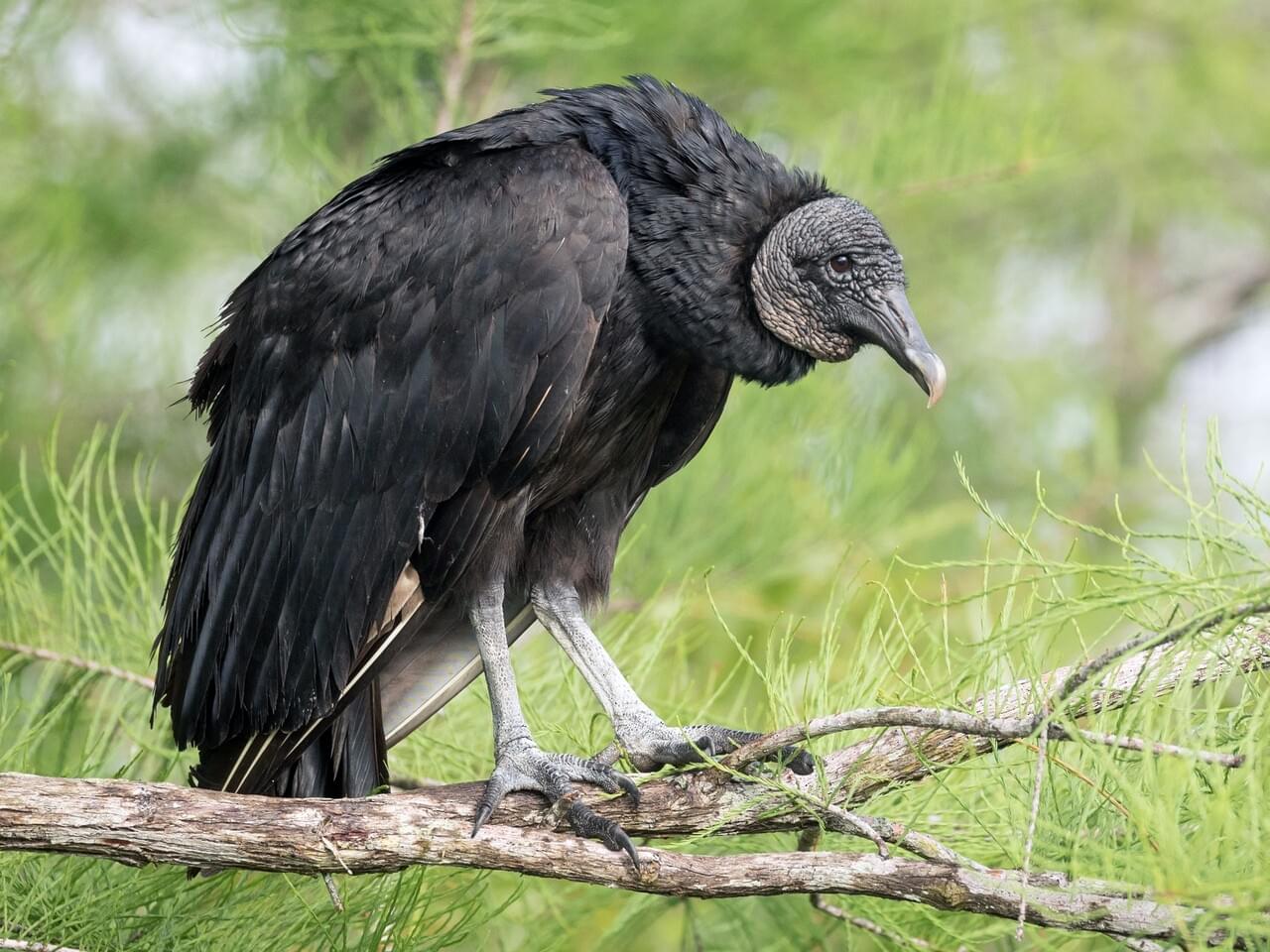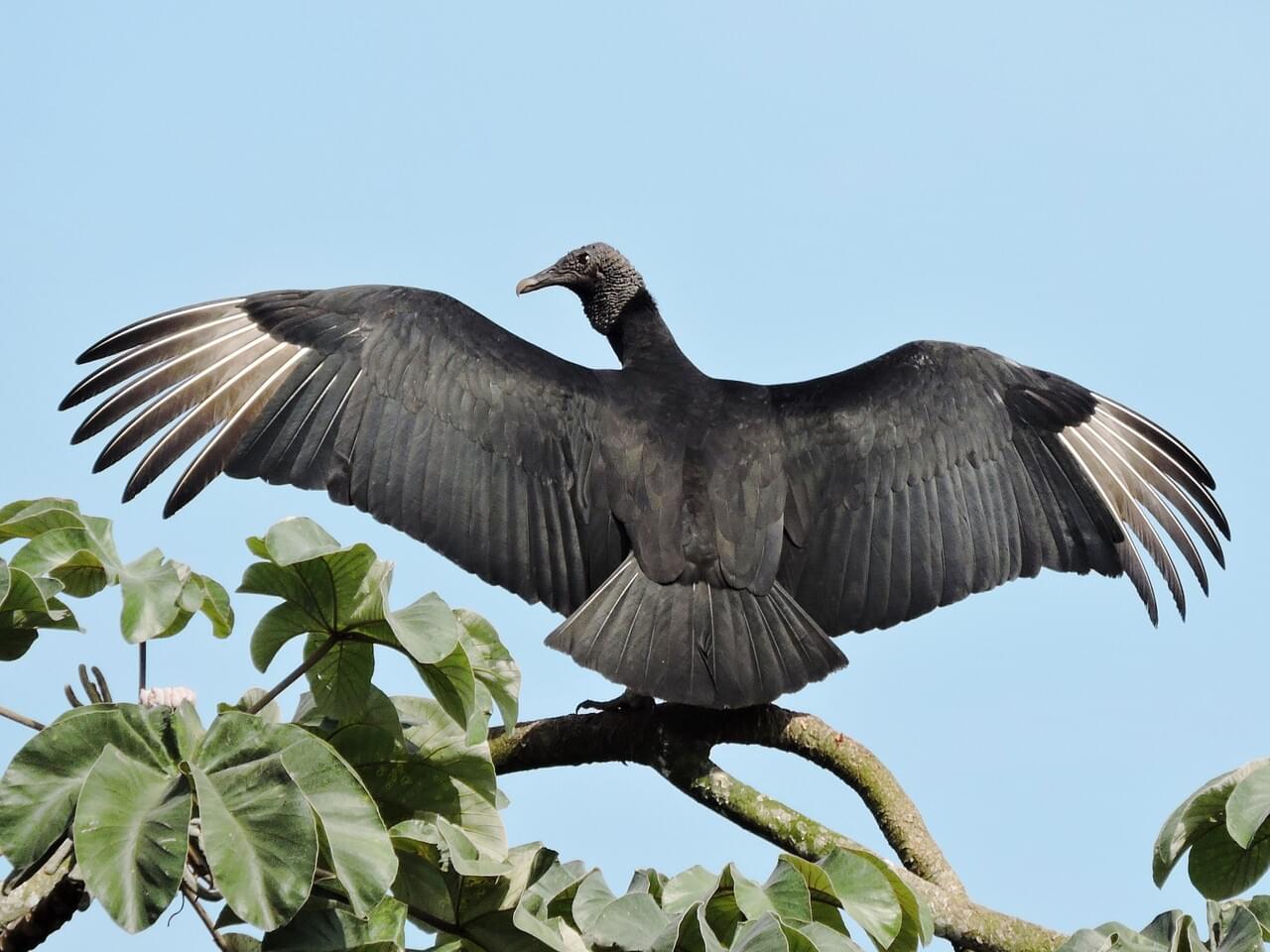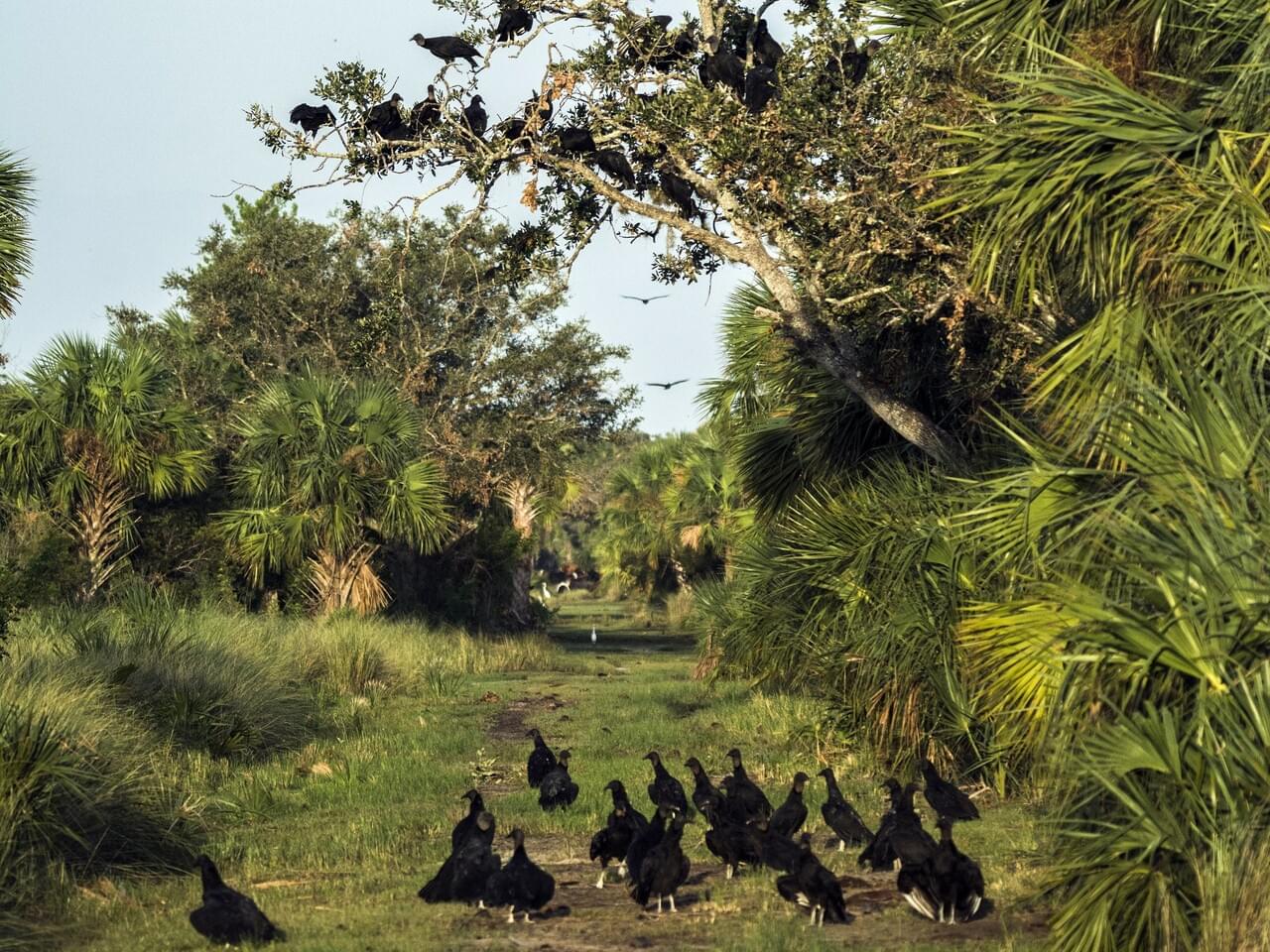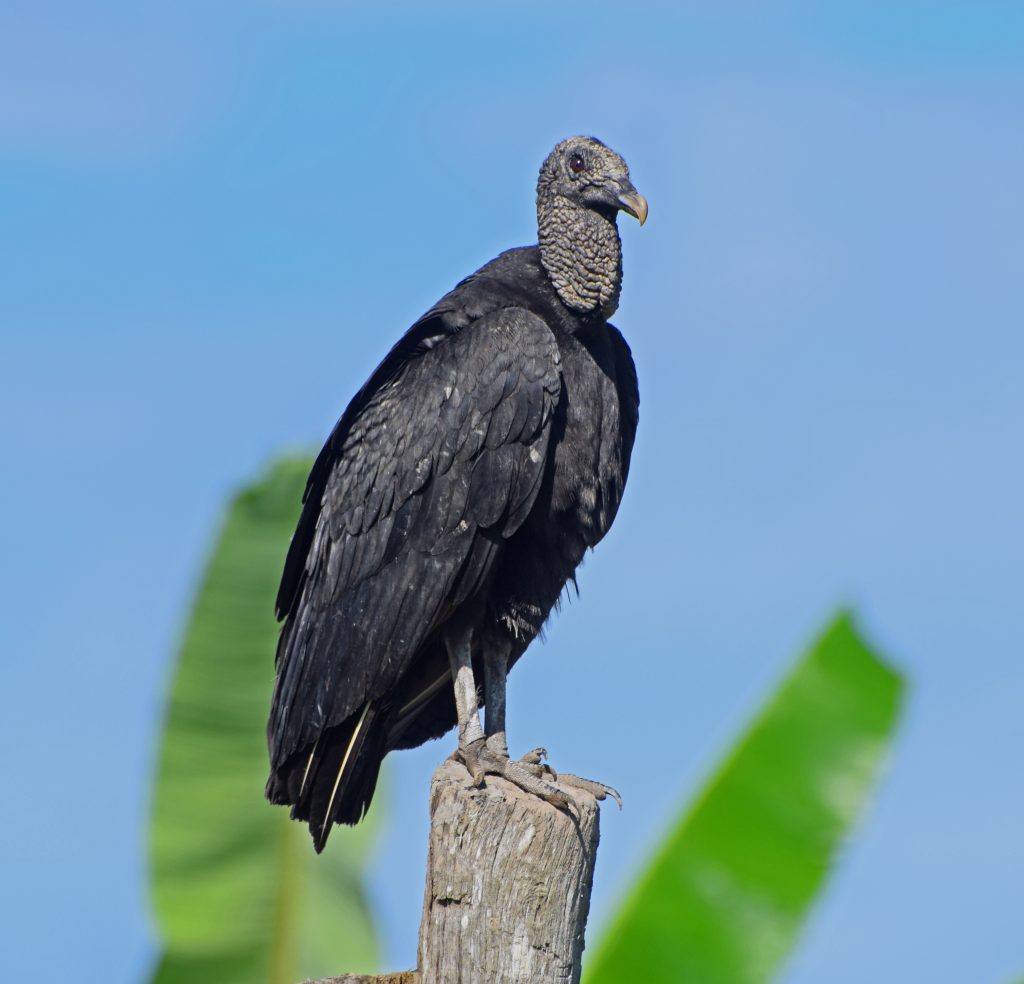 Photo ©
John Bruin
Photo ©
John Bruin
Black Vulture
Regional Species
With sooty black plumage and a bare black head, the Black Vulture is almost dapper. The Black Vulture is among the most common, widespread and easily visible of all American birds. It feeds almost exclusively on carrion. It is a highly social bird with fierce family loyalty. The Black Vulture shares food with relatives, feeding young for months after they’ve fledged.
Range
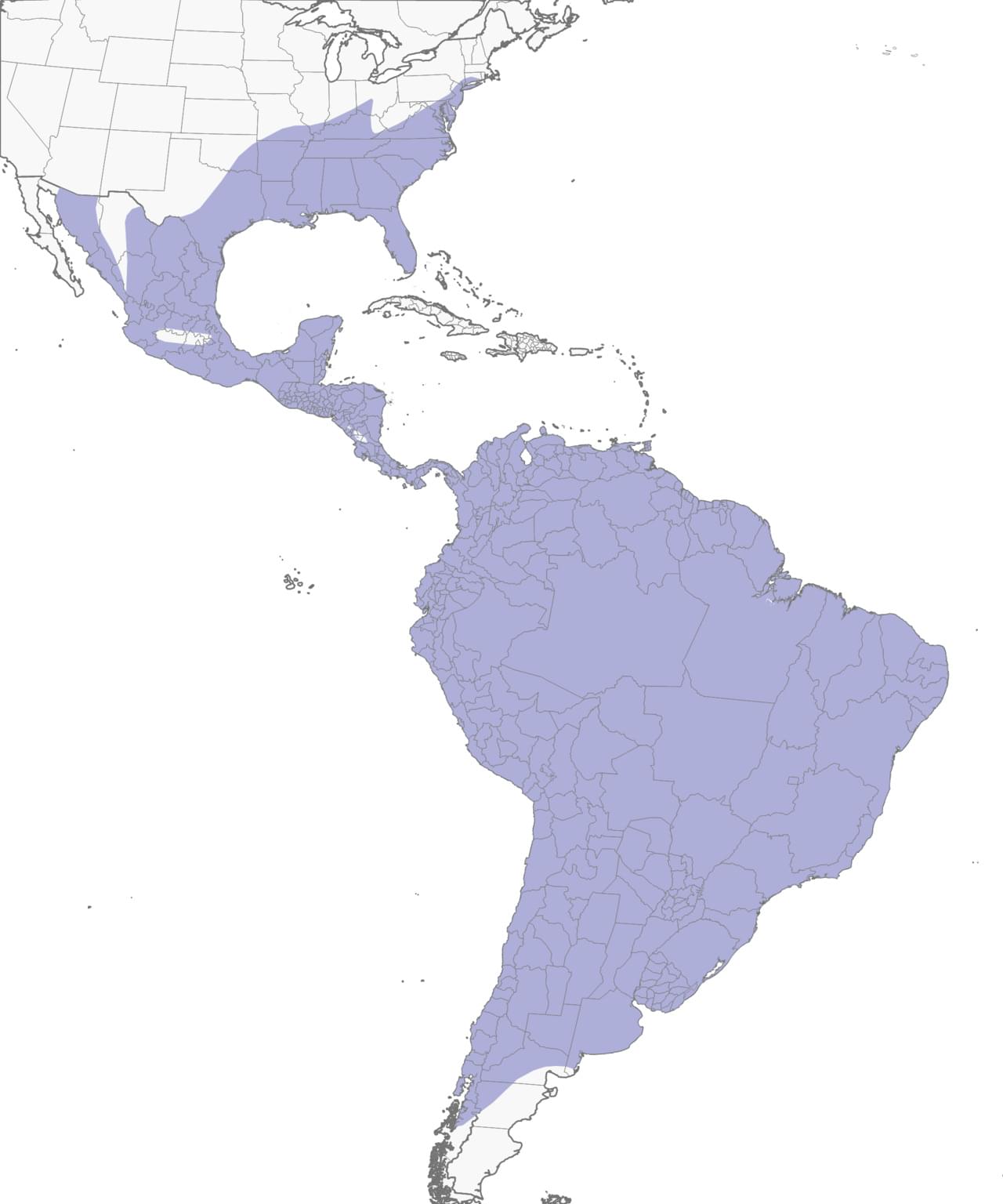
Habitat
The Black Vulture lives year-round in forested and open areas. The are most abundant at low elevations. The Black Vulture breeds in dense woodlands, but usually forages in open habitats and along roads. Some live in semi-rural suburbs. Black Vultures roost in undisturbed stands of tall trees, as well as structures like electrical pylons. Roost sites are often close to water and next to obstructions that generate updrafts of air, to help the flock take flight in the early morning.
Food
Black Vultures feed almost exclusively on carrion, locating it by soaring high in the skies on thermals. From this vantage they can spot carcasses and also keep an eye on Turkey Vultures—which have a more developed sense of smell—and follow them toward food. Black Vultures often gather in numbers at carcasses and then displace Turkey Vultures from the food. Their carrion diet includes small to large animals. Sometimes, the Black Vulture wades into shallow water to feed on floating carrion, or to catch small fish. It occasionally kills small mammals, birds and turtle hatchlings. Black Vultures also often investigate dumpsters and landfills to pick at human discards.
Behavior
Black Vultures are monogamous, staying with their mates for many years, all year round. They maintain strong social bonds with their families throughout their lives. Black Vultures roost in large flocks in the evening, using the communal roost as a meeting place where foraging groups can assemble and adults can reconvene with their young. Unsuccessful foragers can locate food by following their roost mates to carcasses. Black Vultures aggressively prevent non-relatives from joining them at roosts or following them to food sources. They attack each other by pecking, biting, wing-pummeling, and foot-grappling.
Nesting
Black Vultures usually nest in dark cavities such as caves, hollow trees, abandoned buildings, brush piles, thickets, and stumps. Pair reuse successful sites for many years. The female lays 1 to 3 eggs directly on the ground. Both parents feed their young for as many as eight months after fledging.
Appearance
Typical Sound

© Bob McGuire | Macaulay Library
Size and Shape
The Black Vulture is a large bird of 60 cm to 68 cm in length, with broad wings, a short tail, and a small head.
Color Pattern
Black Vultures present an all-black plumage with whitish patches on the tip of the under-wings. They have bare gray heads and a long slender bill which becomes white at the tip in adults. Note splayed wingtips or "fingers" in flight.
Plumage Photos
Similar Species
Turkey Vultures have longer, straighter wings and longer tails than Black Vultures. They hold their wings upward, in a V-shape, and don’t angle them forward as much as Black Vultures. Turkey Vultures have grayish undersides to their flight feathers, giving their wings a distinct two-toned look instead of the uniform black with white stars that Black Vultures show. Adult Turkey Vultures have red heads, but this can be hard to see at distance and young birds have blackish heads, so be careful in using this for identification.
Did you know?!
- Turkey Vultures have an excellent sense of smell, but Black Vultures aren’t nearly as accomplished sniffers. To find food they soar high in the sky and keep an eye on the lower-soaring Turkey Vultures. When a Turkey Vulture’s nose detects the delicious aroma of decaying flesh and descends on a carcass, the Black Vulture follows close behind.
- One-on-one at a carcass, Black Vultures lose out to the slightly larger Turkey Vulture. But flocks of Black Vultures can quickly take over a carcass and drive the more solitary Turkey Vultures away.
- Black Vultures lack a voice box and so their vocal abilities are limited to making raspy hisses and grunts.
- The oldest Black Vulture on record was at least 25 years, 6 months old and they may live even longer in captivity.
